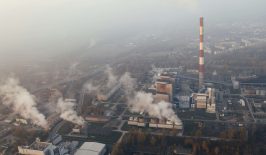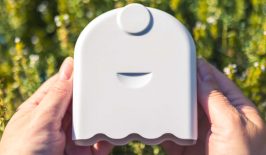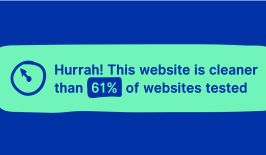The apparel industry has continued to make headlines over its unethical supply-chains ever since the Nike sweatshop scandal in the early 1990s. As environmental consciousness has grown among the public in recent years, scrutiny of its ethical practices has expanded to include its environmental impact as well, with focus being particularly placed on the problems of so-called ‘fast-fashion.’
After years of these negative headlines and relative scrutiny of the apparel industry, some companies have made efforts to clean up their acts. Unfortunately, others have resorted instead to ‘greenwashing’ – sprucing up their public images whilst failing to make any substantial changes to their business practices. For many consumers it is often difficult to tell which is which, because of the lack of readily accessible Environmental, Social and Governance (ESG) data for each company.
Responding to this problem, WikiRate – a collaborative open data initiative – has created a new web platform, Apparel 100, compiling information on the top 100 companies’ supply-chain transparency and ESG data. 17 NGOS, 10 universities and 300+ students were involved in collecting the data that feeds into the analysis.
There are many different standards and methodologies to assess companies’ impacts across a range of different issues – from social justice and human rights, to sustainability and waste management. The Apparel 100 ESG rating combines all of these datasets into one platform and standardises the data so consumers can compare not only a company’s ESG performance, but also their levels of transparency around these metrics. The hope is that it will, by informing consumers and activists, encourage companies to properly report on, and improve, their ESG performance. Laureen van Breen, Managing Director of WikiRate, explained:
“To hold companies accountable we need to start by counting. It is a common misconception that all the information we need is out there. The unfortunate reality is that we simply cannot fully understand corporate impacts with the limited and siloed information that is available today. In some cases it might be that the companies just aren’t making that information public, but in other cases companies simply aren’t even collecting this kind of information (meaning they are in the dark about their impacts too).”
According to Breen, most of the information that companies publish are policies, commitments and plans. But these do not necessarily say anything about what concrete steps have been taken or what results have been achieved:
“By publishing what information is being disclosed and what isn’t, we can not only show which individual companies are moving beyond just policy and commitment disclosures, but also identify trends and outliers on a sector level – and get a picture of how common greenwashing is.”
Despite the significant amount of progress in the industry, apparel remains in the top five polluting industries, and continues to rely heavily on exploited labour. WikiRate’s data revealed:
- Only 13 of 100 apparel companies publish the number of collections per year, and only 5 publish the number of garments produced per year.
- Only 35 of 100 apparel companies publish the amount of waste they generate, a mere 26 of those publish the amount of waste that they recycle, and just 15 of these publish the amount of waste that goes into a landfill.
- Only 35 of 100 apparel companies disclose how much water they withdraw (intake) and just 12 publish how much water they discharge (put back out).
- 28 of 100 apparel companies do not have a Modern Slavery statement (under California, UK, and Australian Act), and of the 51 companies reporting under the UK Act, only 25 meet the minimum legal requirements
- Only 13 of the 100 apparel companies disclose the percentage of new suppliers that they screen using human rights criteria.
- 63 of 100 apparel companies have a grievance mechanism, but only 46 of those make that mechanism available to stakeholders in the supply chain (factories owners, workers, unions etc), which is where there is least oversight, most vulnerabilities and where most issues arise.
The Problems of Fast Fashion
The fast-fashion model – which is still very widespread and which involves creating a large number of collections each year – is especially problematic.
Firstly, it implies that clothes are not designed to last. Companies are incentivised to create clothes to throw away, as they want consumers to buy next season’s line. This inherent wastefulness also applies to the items that are returned or not sold, where, instead of being recycled or repaired, they are often sent to incineration plants or landfills.
This means more clothes must be made, which is heavily polluting and resource intensive. Tanneries to make leather, and dyes for denim and other materials, result in a lot of water pollution, whilst the production of cotton and other materials uses up large amounts of water. Both of these contribute to clean-water scarcity in some of the poorest, drought-vulnerable countries.
The fast turn-around of this model puts pressure on factory owners to meet incredibly short lead times. Factory owners in turn pass the burden onto their workers by, for example, demanding excessive overtime or extra night shifts, or by subcontracting to other factories with lower standards and less oversight. There have also been cases where workers have worn diapers while they worked, due to limited and strictly controlled bathroom breaks. Sometimes, workers may not be paid at all, as factories often begin production before contracts are finalised, and if the order is then cancelled then the workers receive nothing and the clothes they produced go to waste.
It is hoped WikiRate’s use of data can now better inform the public of these practises, and encourage companies to adhere to principles which maintain the environment and human rights. WikiRate already has some success in this area. For example, they developed the FashionChecker together with the Clean Clothes Campaign, which combined data on company commitments to paying living wages in their supply chain with data on actual wages. After companies found out they were being “checked”, it led to more realistic and accurate reporting on their commitments. However, as Breen states, what is perhaps more important is what the companies are not reporting:
“By collating the work that WikiRate’s partners are doing, we wanted to show the progress that has been made in terms of transparency in the apparel sector, underscoring that data driven advocacy (a.k.a that evidence based campaigning) works. That said, even with the progress that has been made, there is still a long way to go, so WikiRate also wanted to shine a light on what information companies are not publishing (and possibly even collecting), yet.”









